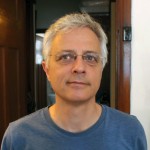
Andrew Hurle
twicenine@yahoo.com.au
www.andrewhurle.com
Biography
Andrew Hurle is an artist who lives and works in Sydney, Australia. For the past five years he has been undertaking doctoral research into the role of print in certifying and counterfeiting currency. Prior to this he was a lecturer in print-media at Sydney College of the Arts where he taught subjects relating to image reproduction and digital processing. Andrew will be travelling to Europe in 2013 on a grant from the Australia Council of the Arts to research new work on the use of mechanical engraving in monetary design.
Illustrated Talk
Currency in Abstraction: Early experiments in mechanical engraving
Representing the preeminence of printed authority, the banknote brings together traditional forms of intaglio, lithography and relief onto a single surface to promote the visible integrity of the printed object. Its graphic credibility derives not as much from the stately engraved portraits, as from the abstract configurations made by machines called geometric lathes which were invented for the express purpose of engraving monetary ornament. Throughout the secretive industry of 19th century security printing, anonymous operators programmed these machines to create fantastic and ‘inimitable’ linear forms that not only made the banknote an instantly recognisable object but also encouraged the ‘migration’ of a progressively debased monetary signage that lent value to less prestigious and even pedestrian kinds of printed ephemera such as lottery tickets, diplomas, and advertisements.
This presentation will include unpublished engravings from the archives of the Smithsonian Museum, and the Bank of England showing monetary ornament being designed in the scrapbooks and notebooks of 19th century inventors and operators of the geometric lathe. The earliest of these demonstrate the radically experimental nature of the engraver’s work and an unprecedented use of moiré and line-screens that seem to anticipate 20th century optical abstraction. The fact that they arrived before photography, makes the engravings one of the first designs to have been fully mediated by machine and, it could be argued, unacknowledged precursors to computational art. By tracing nothing more than the geometry of their own process they satisfy many tenets and criteria associated with modernist painting (being automatic, self-referential, non-objective etc). These are prints however, that predate modernism by almost a hundred years, whose discreet existence seems to open a window to future aesthetic currencies.
The talk will also present research by the author who processes fragments of engraved guilloche using computer-controlled printing and engraving devices to create artwork that is both a reconstruction and reinterpretation of what he considers one of the earliest forms of vector imaging.
Poster Presentation
Forging Value: an etymology of monetary signification
This poster presents elements of recent doctoral research into the role of ornament in the reproduction of monetary value. I suggest that print has an ambiguous role in this regard, having first to ‘forge’ value on a banknote before it can proscribe against imitation. This duplicitous operation has historically brought together the flamboyance of 17th Century calligraphic flourishing and the optical complexities of 19th century mechanical engraving to form a universal kind of monetary signification that identifies printed money as such and guarantees its integrity. The poster will also present examples of printed art work that has reinterpreted early 19th century monetary artefacts through digital processing and printing.
